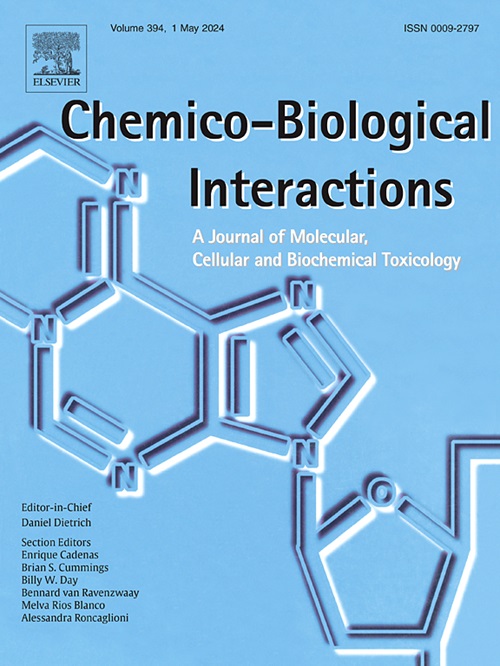立体异构体丝裂霉素链间交联对MCF-7和K562癌细胞基因表达的影响不同。
IF 4.7
2区 医学
Q1 BIOCHEMISTRY & MOLECULAR BIOLOGY
引用次数: 0
摘要
丝裂霉素C (MC)是一种抗癌药物,用于治疗胃癌、肛门癌和肺癌。MC的主要细胞毒性是由于其与DNA形成链间交联(ICLs)的能力。MC主ICL在C1‘’处的立体构型为R (α-ICL)。相反,decarbamoylmitomycin C, MC的合成衍生物,产生主要的S立体异构体ICL (β-ICL)。在这里,我们研究了α/β-ICL的立体化学结构对细胞反应的影响,通过关注MCF-7和K562细胞系(一个是野生型,另一个是突变的TP53)在两种icl治疗后的基因表达变化。我们用在单个位点含有α-或β-ICL的双寡核苷酸转染两株细胞系,并提取RNA进行转录组分析。结果表明,在MCF-7和K562细胞中,α/β-ICL的立体构型导致了不同的基因表达变化。我们的数据还表明,在MCF-7细胞中,α-ICL处理触发CDKN1A表达的强烈增加,这也在蛋白质水平上观察到,与β-ICL处理相反。此外,在两种细胞系中,β-ICL处理导致比α-ICL更大量的基因下调,特别是在携带TP53突变的K562细胞中。这表明β-ICL毒性依赖于一种导致基因表达整体下调的机制,并可能解释DMC对TP53突变细胞的更大毒性。本文章由计算机程序翻译,如有差异,请以英文原文为准。
Stereoisomeric mitomycins interstrand crosslinks differently impact gene expression in MCF-7 and K562 cancer cells
Mitomycin C (MC) is an anticancer drug used to treat stomach, anal and lung cancers. The main cytotoxicity of MC is due to its ability to form interstrand crosslinks with DNA (ICLs). The stereochemical configuration at C1″ of MC major ICL is R (α-ICL). In contrast, decarbamoylmitomycin C, a synthetic derivative of MC, generates the major S stereoisomeric ICL (β-ICL). Here, we investigated the effect of the stereochemical configuration of the α/β-ICL on the cellular response by focusing on gene expression changes in MCF-7 and K562 cell lines, one with wild type and the other with mutated TP53, upon treatment with both ICLs. We transfected both cell lines with duplex oligonucleotides containing either the α- or β-ICL at a single site and extracted RNA for transcriptome analysis. Results show that the stereochemical configuration of the α/β-ICL is responsible for distinct gene expression changes in MCF-7 and K562 cells. Our data also show that, in MCF-7 cells, α-ICL treatment triggers a strong increase in CDKN1A expression which is also observed at the protein level, contrary to what happens upon β-ICL treatment. In addition, β-ICL treatment led to a strong downregulation of a greater number of genes than the α-ICL in both cell lines, in particular in K562 cells, which harbor a TP53 mutation. This suggests that the β-ICL toxicity relies on a mechanism which leads to an overall downregulation of gene expression and may explain the greater toxicity of DMC toward TP53 mutant cells.
求助全文
通过发布文献求助,成功后即可免费获取论文全文。
去求助
来源期刊
CiteScore
7.70
自引率
3.90%
发文量
410
审稿时长
36 days
期刊介绍:
Chemico-Biological Interactions publishes research reports and review articles that examine the molecular, cellular, and/or biochemical basis of toxicologically relevant outcomes. Special emphasis is placed on toxicological mechanisms associated with interactions between chemicals and biological systems. Outcomes may include all traditional endpoints caused by synthetic or naturally occurring chemicals, both in vivo and in vitro. Endpoints of interest include, but are not limited to carcinogenesis, mutagenesis, respiratory toxicology, neurotoxicology, reproductive and developmental toxicology, and immunotoxicology.

 求助内容:
求助内容: 应助结果提醒方式:
应助结果提醒方式:


